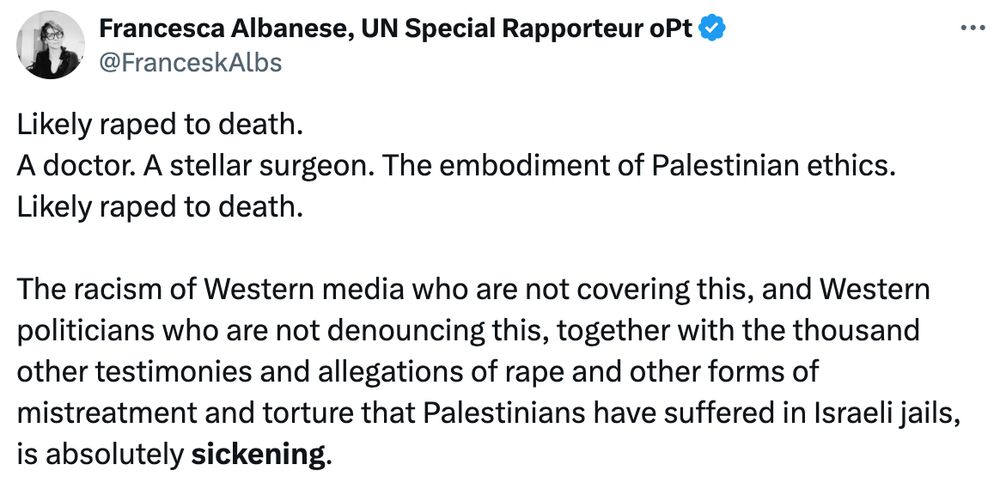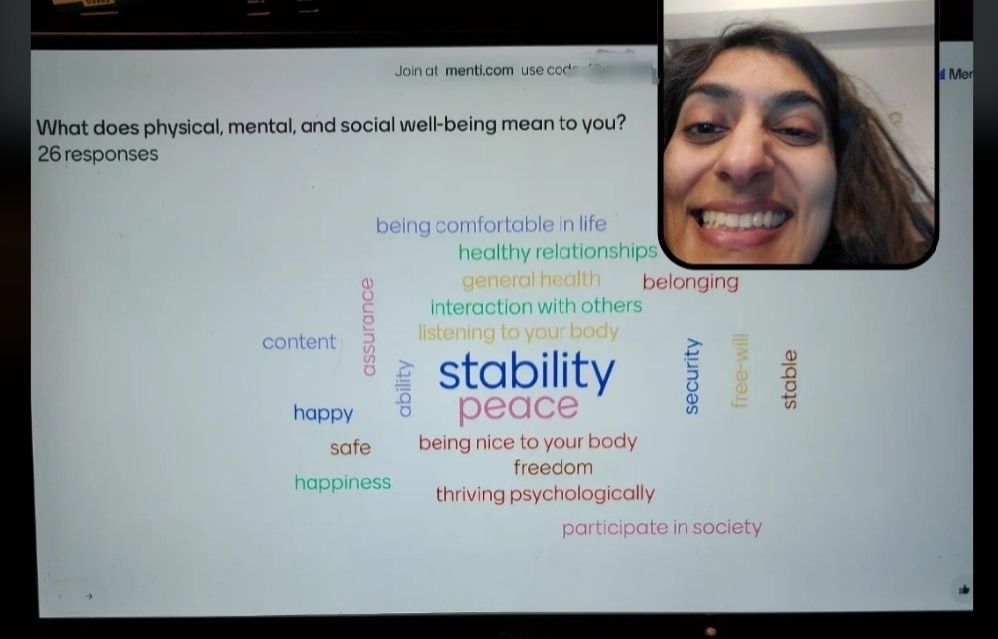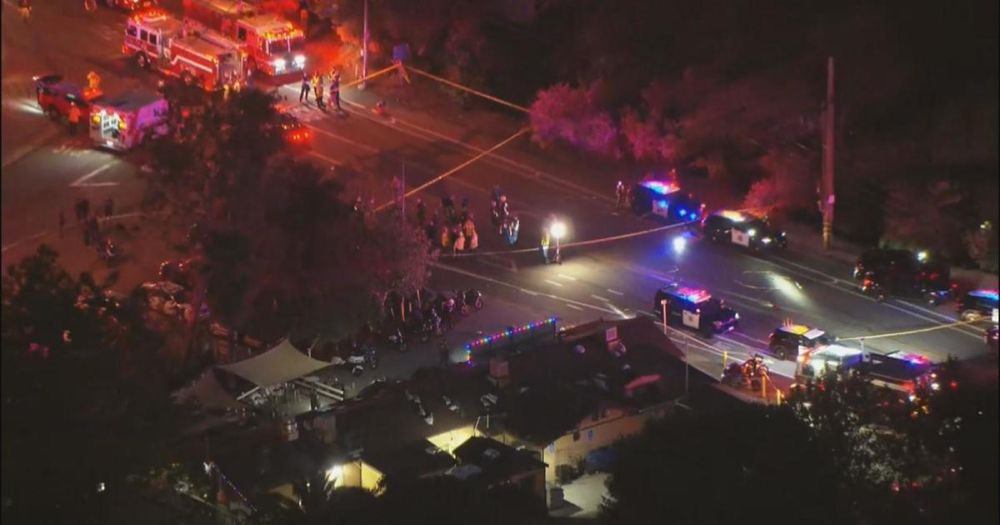Khudejha Asghar, PhD
@khudejha.bsky.social
62 followers
110 following
13 posts
Researcher @ University of Edinburgh, practitioner, strategist on preventing & responding to GBV, violence against children, & building an equitable world. Lifelong learner, dreamer, dabbler in creative self-expression.
Posts
Media
Videos
Starter Packs
Pinned
Reposted by Khudejha Asghar, PhD
Santiago Mayer
@santiagomayer.com
· Aug 15
Reposted by Khudejha Asghar, PhD
Reposted by Khudejha Asghar, PhD
Kat Tenbarge
@kattenbarge.bsky.social
· May 24
Reposted by Khudejha Asghar, PhD
Eman Abdelhadi
@emanabdelhadi.bsky.social
· Feb 19

Life expectancy losses in the Gaza Strip during the period October, 2023, to September, 2024
Our approach to estimating life expectancy losses in this study is conservative as
it ignores the indirect effect of the war on mortality. Even ignoring this indirect
effect, results show that the ong...
www.thelancet.com
Reposted by Khudejha Asghar, PhD
Reposted by Khudejha Asghar, PhD
Kat Tenbarge
@kattenbarge.bsky.social
· Nov 19
Reposted by Khudejha Asghar, PhD
Reposted by Khudejha Asghar, PhD
Niyati Shah
@niyati.bsky.social
· Nov 15
Reposted by Khudejha Asghar, PhD
Refugees
@refugees.skyfleet.blue
· Sep 13

Gender-Based Violence in the Context of the Ukraine Crisis - Romania Assessment [EN/RO] - Romania
Countries: Romania, Ukraine
Source: VOICE
Please refer to the attached files.
EXECUTIVE SUMMARY
The Russian war against Ukraine continues to have a significant impact on neighboring countries, including Romania. As a result, Romania is in an unprecedented situation, having sheltered the largest number of refugees - over 3 million - in the country’s history. While many refugees have since left Romania, recent data show 137,384 Ukrainians and 1,320 third-country nationals have obtained temporary protection on Romanian territory. Approximately 80% of the Ukrainian refugees in Romania are women and children. The country has proven resilient and provided refugees from Ukraine with emergency humanitarian aid and longer-term support to foster their social and economic integration. Along with the refugee crisis, Romania is also facing an economic crisis, experiencing the highest inflation rate in the last three decades.
This is the second assessment undertaken by VOICE looking at the safety, protection, and well-being needs of Ukrainian women refugees living in Romania. It is a continuation of VOICE’s and HIAS’s efforts to draw attention to and address the gender-based violence (GBV) related situation of women and girls in the context of the Ukrainian crisis response. A rapid assessment in a dynamic environment, the first assessment, undertaken in the summer of 2022, focused on three issues: 1. the GBV situation and risks of refugee women during displacement, including at border crossing points; 2. the situation in temporary accommodation centers, and 3. funding needs of women’s civil society organizations supporting refugee women. This second assessment sought to obtain a deeper understanding of the situation and needs of displaced Ukrainian women and other groups of women living in Romania. During the initial phase of response to the refugee crisis, beginning in February 2022, the priority was to ensure the safety of people fleeing Ukraine and provide refugees with safe accommodation and humanitarian assistance to meet their needs. This assessment focused on the situation for these women one year on, in particular the GBV-related safety situation of refugee women and vulnerable host community women in Romania. It focused on the intersection of GBV and economic and psychosocial needs to inform HIAS and VOICE multi-sectoral programming and continued support to Romanian partners to promote women’s safety, protection, and well-being.
The assessment was carried out during March and April 2023 in six localities, including four urban settings of Braila, Constanta, Bucharest, and Galati, and two rural communities of Curcani (Calarasi County) and Romanesti villages (Dambovita County), each located approximately 40 km from Bucharest. The urban localities were selected as they are considered home to the largest number of refugees fleeing Ukraine. The rural areas were chosen to provide an understanding of the safety and socioeconomic situation of Ukrainian refugees and other vulnerable women living outside urban areas, including Romanian Roma women. In total, 145 women, including Ukrainian, Syrian, Somali, and Yemeni women refugees and Romanian Roma women, participated in the assessment, as well as 22 representatives from civil society and government agencies supporting refugees and other vulnerable women.
reliefweb.int
Reposted by Khudejha Asghar, PhD





